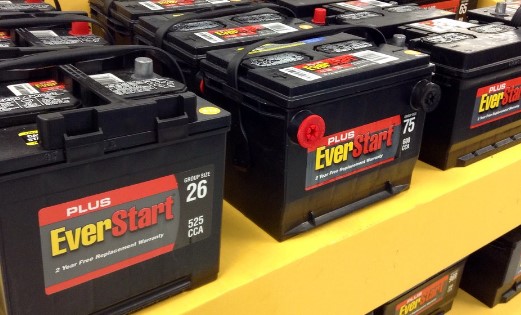Car batteries are frequently accused of causing problems, but it is actually the car battery terminals that are more likely to be the cause. Here’s how to check these very important parts of your vehicle’s electrical system.
Understanding why car batteries have problems can help you determine if there is a problem with your battery or it is something else in your electrical system. This article will explain how aging components can affect both starting and charging systems as well as common symptoms associated with poor performance.
If you do encounter a dead battery, follow our simple steps for jump starting a dead car battery . Once started, you may need another car to give you a recharge until the alternator begins working again or you can perform methods of trickle charging a car battery to help keep the charge up.

With any luck, this will be the last time you have to deal with a dead battery for some time, but if your battery fails again soon after getting it replaced or jump started, then follow our diagnosing guide for other potential causes of common problems related to car batteries .
Why do Car Batteries Fail?
Car batteries are actually remarkably reliable considering what they are used for. If you consider that your battery is similar in technology to those powering the millions of vehicles on the road today, their dependability is quite impressive. Of course, anyone who has driven long enough will have experienced at least one dead car battery. There are several different reasons batteries fail.
Car batteries will not last forever and they have a limited number of charge/discharge cycles before their capacity decreases to the point where a new battery is needed. There are several factors that affect this cycle life, such as how deeply the battery is cycled each time and the temperature while charging or discharging. Battery life can also be shortened by leaving a car’s lights on for an extended period of time because the current draw from these accessories can add up over time and drain even a healthy battery. In addition, some batteries seem more prone to failure than others based on design, age or other factors related to manufacturing defects or exposure to extreme conditions. An example would be cheap low quality batteries bought at discount department stores that do not hold up very well under normal use for a reasonable period of time before failing.
While this list may make it sound like all you need to do to avoid battery failure is purchase good quality batteries, there are other common causes of problems that occur when they are needed most – when you try to start your car. A battery’s job during starting is twofold: first, the current must be sufficient for the starter motor and accessories; second, the voltage must be above what is required by the vehicle’s computer so that the fuel injection system will function properly once started. This means that over or undercharging can lead to all sorts of problems even if your battery has otherwise been performing good.
The age of the battery affects its ability to give a sufficient current. As stated before, batteries have limited cycle life and will only be able to power your car for so long. Some people try to squeeze every last mile out of a battery by topping it off with distilled water as needed and periodically charging the battery on a trickle charger if possible, but this only delays the inevitable replacement that is going to eventually be necessary.
Corrosion can build up on the terminals from exposure to the elements or from electrical current flowing through them. The effects may not be immediately noticeable as corrosion actually weakens a connection over time, which results in decreased conductivity leading to lower available current for starting or recharging. In addition, corrosion creates an additional resistance against electrical flow that builds up over time. If your battery terminals are corroded, you may have a difficult or even impossible time getting your car to start. Cleaning the corrosion off of the terminals with a wire brush can help improve their conductivity temporarily, but this will not address whatever caused them to corrode in the first place. Replacing old or damaged wiring is recommended for more permanent repair.
As any standard batter will tell you, your car battery can die at the worst of times — like when you’re driving down a highway or are stranded somewhere. If this happens, it’s important to know how to properly get your car started again. There are many different situations in which you’ll need to jump start a car battery , so if this is something new to you, pay close attention. Before jumping into anything, be sure that no one is standing around or near the cars that are being worked on anymore — safety first! So you have to have good car insurance. Insurance companies in the Philippines collect your premiums in order to take care of your claims should you meet an accident. It is important to choose the right type of company to buy insurance from. This is because it is only when you meet an accident that you know the value of what you bought. You should ensure you have the best service and protection for your vehicle.

All about Recovery Strap and Tow Rope
There is a common misconception between recovery strap and tow rope and most of the time, these two are marketed as just the same products.
But, even if recovery and tow straps may look very similar, they have defining features and purposes that set them apart from each other. Read entire article about tow rope.

